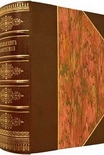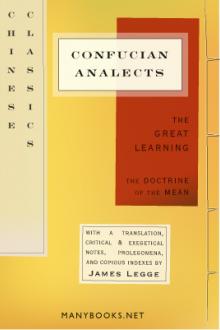Myths and Legends of China by E. Werner (free ebook reader for iphone TXT) 📗

- Author: E. Werner
Book online «Myths and Legends of China by E. Werner (free ebook reader for iphone TXT) 📗». Author E. Werner
The first Heaven is Yü Ch’ing. In it reigns the first member of the Taoist triad. He inhabits the Jade Mountain. The entrance to his palace is named the Golden Door. He is the source of all truth, as the sun is the source of all light.
Various authorities give his name differently—Yüan-shih T’ien-tsun, or Lo Ching Hsin, and call him T’ien Pao, ‘the Treasure of Heaven,’ Some state that the name of the ruler of this first Heaven is Yü Huang, and in the popular mind he it is who occupies this supreme position. The Three Pure Ones are above him in rank, but to him, the Pearly Emperor, is entrusted the superintendence of the world. He has all the power of Heaven and earth in his hands. He is the correlative of Heaven, or rather Heaven itself.
The second Heaven, Shang Ch’ing, is ruled by the second person of the triad, named Ling-pao T’ien-tsun, or Tao Chün. No information is given as to his origin. He is the custodian of the sacred books. He has existed from the beginning of the world. He calculates time, dividing it into different epochs. He occupies the upper pole of the world, and determines the movements and interaction, or regulates the relations of the yin and the yang, the two great principles of nature.
The Taoist Triad
In the third Heaven, T’ai Ch’ing, the Taoists place Lao Page 125Tzŭ, the promulgator of the true doctrine drawn up by Ling-pao T’ien-tsun. He is alternatively called Shên Pao, ‘the Treasure of the Spirits,’ and T’ai-shang Lao-chûn, ‘the Most Eminent Aged Ruler.’ Under various assumed names he has appeared as the teacher of kings and emperors, the reformer of successive generations.
This three-storied Taoist Heaven, or three Heavens, is the result of the wish of the Taoists not to be out-rivalled by the Buddhists. For Buddha, the Law, and the Priesthood they substitute the Tao, or Reason, the Classics, and the Priesthood.
As regards the organization of the Taoist Heavens, Yü Huang has on his register the name of eight hundred Taoist divinities and a multitude of Immortals. These are all divided into three categories: Saints (Shêng-jên), Heroes (Chên-jên), and Immortals (Hsien-jên), occupying the three Heavens respectively in that order.
The Three Causes
Connected with Taoism, but not exclusively associated with that religion, is the worship of the Three Causes, the deities presiding over three departments of physical nature, Heaven, earth, and water. They are known by various designations: San Kuan, ‘the Three Agents’; San Yüan, ‘the Three Origins’; San Kuan Ta Ti, ‘the Three Great Emperor Agents’; and T’ai Shang San Kuan, ‘the Three Supreme Agents.’ This worship has passed through four chief phases, as follows:
The first comprises Heaven, earth, and water, T’ien, Ti, Shui, the sources of happiness, forgiveness of sins, and deliverance from evil respectively. Each of these is called King-emperor. Their names, written on labels and offered to Heaven (on a mountain), earth (by burial), and Page 126water (by immersion), are supposed to cure sickness. This idea dates from the Han dynasty, being first noted about A.D. 172.
The second, San Yüan dating from A.D. 407 under the Wei dynasty, identified the Three Agents with three dates of which they were respectively made the patrons. The year was divided into three unequal parts: the first to the seventh moon; the seventh to the tenth; and the tenth to the twelfth. Of these, the fifteenth day of the first, seventh, and tenth moons respectively became the three principal dates of these periods. Thus the Agent of Heaven became the principal patron of the first division, honoured on the fifteenth day of the first moon, and so on.
The third phase, San Kuan, resulted from the first two being found too complicated for popular favour. The San Kuan were the three sons of a man, Ch’ên Tzŭ-ch’un, who was so handsome and intelligent that the three daughters of Lung Wang, the Dragon-king, fell in love with him and went to live with him. The eldest girl was the mother of the Superior Cause, the second of the Medium Cause, and the third of the Inferior Cause. All these were gifted with supernatural powers. Yüan-shih T’ien-tsun canonized them as the Three Great Emperor Agents of Heaven, earth, and water, governors of all beings, devils or gods, in the three regions of the universe. As in the first phase, the T’ien Kuan confers happiness, the Ti Kuan grants remission of sins, and the Shui Kuan delivers from evil or misfortune.
The fourth phase consisted simply in the substitution by the priests for the abstract or time-principles of the three great sovereigns of ancient times, Yao, Shun, and Yü. The literati, proud of the apotheosis of their ancient Page 127rulers, hastened to offer incense to them, and temples, San Yüan Kung, arose in very many parts of the Empire.
A variation of this phase is the canonization, with the title of San Yüan or Three Causes, of Wu-k’o San Chên Chün, ‘the Three True Sovereigns, Guests of the Kingdom of Wu.’ They were three Censors who lived in the reign of King Li (Li Wang, 878–841 B.C.) of the Chou dynasty. Leaving the service of the Chou on account of Li’s dissolute living, they went to live in Wu, and brought victory to that state in its war with the Ch’u State, then returned to their own country, and became pillars of the Chou State under Li’s successor. They appeared to protect the Emperor Chên Tsung when he was offering the Fêng-shan sacrifices on T’ai Shan in A.D. 1008, on which occasion they were canonized with the titles of Superior, Medium, and Inferior Causes, as before, conferring upon them the regencies of Heaven, earth, and water





Comments (0)